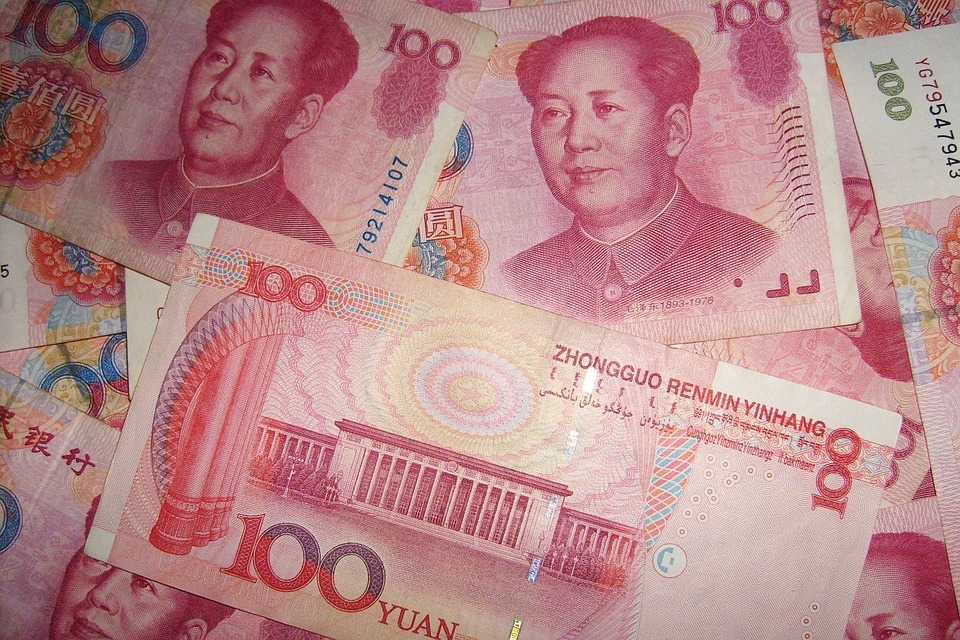The South Korean won’s March rally by 8.2% and Malaysian ringgit’s jump at 7.8% were the highest since 1998. Top Ten Asian currencies, except the yen, increased by 3%.
"This is a good performance for Asian currencies, especially the won, baht, Taiwan dollar, the renminbi and ringgit. The renminbi’s movement has a direct impact on the currencies of developing Asian countries. In the future, we expect a decline in these currencies", - said Trivedi.
Exchange rate in developing countries has demonstrated record growth in March 1999. This happened after commodity prices rebounded, the dollar fell, and the Fed has signaled that interest rates will slowly rise. Nevertheless, Asian exports have yet to recovery, what creates prospects of a new devaluations wave in the region.
The renminbi is depreciating against the currencies of China's trading partners. Expectations are reinforcing possibility of additional monetary stimulus in Japan, says Trivedi.
In the next 12 months, Goldman predicts 14% drop for the yen, to 130 yen per dollar - at the level of 2002. In addition, the renimnbi is expected to decline against the US dollar from 7.4% to 7%, with the result that the Chinese currency will drop to lows against the dollar since May 2008. The won will be reduced by almost 12% from the current markers, according to Trivedi.
The slowdown in economic growth and the prospects for further reductions in interest rates in South Korea make Asia fourth-largest economy in the world - "a place offering many ways to be right," he said.
Goldman make "bearish" predictions for the yen, the renminbi and the won. At the end of March 2017, the Japanese currency may fall to 118 per dollar. In the same period, the renminbi is expected at around 6.7 to the US dollar, while South Korean won is projected at 1218 level, according to Bloomberg’s estimates.
At the March meeting, the Fed predicted only two rate increases this year compared to four rises expected in December and three rises predicted by Goldman. At the same time, futures contracts indicate a 62%-probability of that the US central bank will raise rates likely just once this year.
Despite the fact that the renminbi has risen by 0.45% against the dollar this year, its nominal exchange rate in the region dropped significantly according to Westpac Banking Corp.'s indexes. China would like to continue to devalue its currency even despite the dollar’s rebound. The country needs this to stimulate exports and maintain free cash conditions due to lower economic growth, notes Goldman.
This means that the renminbi will weaken against the dollar. A further decline in the RMB exchange rate on a trade-weighted basis, or in relation to the dollar means that the countries, which exports have suffered, may face further pressures and need to devalue in order to stabilize the export.
source: bloomberg.com
"This is a good performance for Asian currencies, especially the won, baht, Taiwan dollar, the renminbi and ringgit. The renminbi’s movement has a direct impact on the currencies of developing Asian countries. In the future, we expect a decline in these currencies", - said Trivedi.
Exchange rate in developing countries has demonstrated record growth in March 1999. This happened after commodity prices rebounded, the dollar fell, and the Fed has signaled that interest rates will slowly rise. Nevertheless, Asian exports have yet to recovery, what creates prospects of a new devaluations wave in the region.
The renminbi is depreciating against the currencies of China's trading partners. Expectations are reinforcing possibility of additional monetary stimulus in Japan, says Trivedi.
In the next 12 months, Goldman predicts 14% drop for the yen, to 130 yen per dollar - at the level of 2002. In addition, the renimnbi is expected to decline against the US dollar from 7.4% to 7%, with the result that the Chinese currency will drop to lows against the dollar since May 2008. The won will be reduced by almost 12% from the current markers, according to Trivedi.
The slowdown in economic growth and the prospects for further reductions in interest rates in South Korea make Asia fourth-largest economy in the world - "a place offering many ways to be right," he said.
Goldman make "bearish" predictions for the yen, the renminbi and the won. At the end of March 2017, the Japanese currency may fall to 118 per dollar. In the same period, the renminbi is expected at around 6.7 to the US dollar, while South Korean won is projected at 1218 level, according to Bloomberg’s estimates.
At the March meeting, the Fed predicted only two rate increases this year compared to four rises expected in December and three rises predicted by Goldman. At the same time, futures contracts indicate a 62%-probability of that the US central bank will raise rates likely just once this year.
Despite the fact that the renminbi has risen by 0.45% against the dollar this year, its nominal exchange rate in the region dropped significantly according to Westpac Banking Corp.'s indexes. China would like to continue to devalue its currency even despite the dollar’s rebound. The country needs this to stimulate exports and maintain free cash conditions due to lower economic growth, notes Goldman.
This means that the renminbi will weaken against the dollar. A further decline in the RMB exchange rate on a trade-weighted basis, or in relation to the dollar means that the countries, which exports have suffered, may face further pressures and need to devalue in order to stabilize the export.
source: bloomberg.com



















